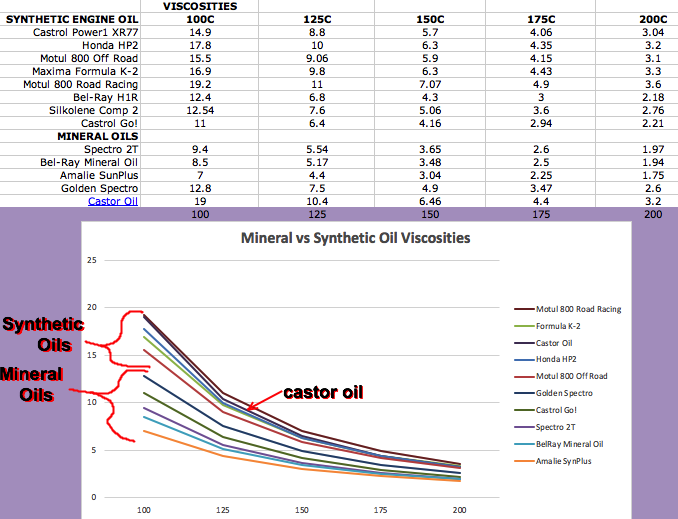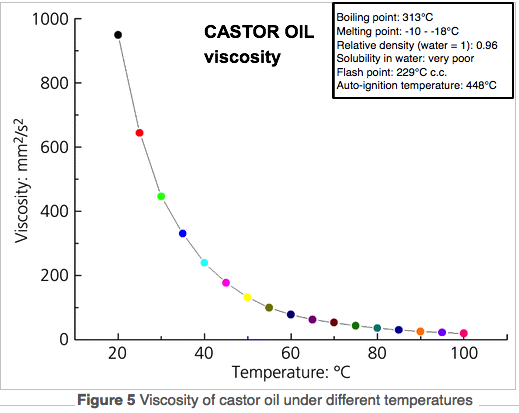Safety Data Sheets for engine oils list the non-synthetic oils that are in the product by the CAS# which then can be looked up on this page to know what group of oil it belongs to. This reveals much more than the promotional liteerature which intentionally obscures the fact that the product may have a lot of no good group 1 oil in it. It can also cover up the fact that it even has mineral oil in it, making it seem to be only synthetic oil. For example, Amsoil Dominator is promoted as "Synthetic" without any direct mentaion of mineral oil content although around 50% of it is the no good group 1 oil which they probably then countered by adding a lot of detergents to help clean off the crude that oil produces, as well as anti-smoke additive since group 1 smokes a lot. So would you rather buy a product with cheap oils that it had to counter with lots of additives, or would you rather buy an engine oil that used good quality base oils to start with?
Here's the section of its safety data sheet that reveals what's in it. What's red is what I added:

In studying this topic of oil groups I found that they grouped them mostly by how they were refined, not by their final characteristics such as flash point and carbon chain #'s. But if I was the man in charge decades ago I would of have them grouped by their characteristics instead. For example the bright stock oil that comprises most of Golden Spectro is classified as group 1 but its flash point is higher than synthetics and its carbon chain # is at the low end of group 2 oils so I am adding it to the group 2 oils.
CAS # |
Carbon
Chain # |
Flash
Point °C |
Boiling
Point °C |
Density |
Viscosity
@ 40°C |
| Synthetic Oil |
|
|
|
|
|
11138-60-6
|
60
|
238 |
|
.95 |
|
| Castor Oil |
|
|
|
|
|
| 8001-79-4 |
51
|
229 |
|
.96 |
|
| Group 4 Oil |
|
|
|
|
|
| Shell XHVI 4.0 |
|
215 |
|
.82 |
|
| Bright Stock Oil |
|
|
|
|
|
| 64742-01-4 |
>25 |
|
400
|
.9 |
|
| Group 2 Oil |
|
|
|
|
|
| 64742-88-4 |
20-50 |
238 |
389
|
.88 |
|
| Group 1 Oil |
|
|
|
|
|
| 68476-30-2 |
>9 |
52 |
310
|
.84 |
6.4
|
Here's a graph showing the viscosities of mineral, castor, and synthetic oils:

Light Oils/Solvents (slightly less carbon chains and boiling points than most group 1 oils)
CAS 64742-88-7 group 1
A complex combination of hydrocarbons obtained from the distillation of crude oil or natural gasoline. It consists predominantly of saturated hydrocarbons having carbon numbers predominantly in the range of C9 through C12 and boiling in the range of approximately 179°C to 210°C
Synonyms: mineral spirits, solvent, turpentine substitute, medium aliphatic solvent naphtha
flash point: 57°C
density: 78 g/mL at 20 °C
64742-48-9 group 1
A complex combination of hydrocarbons obtained by treating a petroleum fraction with hydrogen in the presence of a catalyst. It consists of hydrocarbons having carbon numbers predominantly in the range of C6 through C13 and boiling in the range of approximately 65°C to 230°C (149°F to 446°F).
Synonyms: Hydrotreated heavy petroleum
Viscosity kinematic: 1.23 mm2/s (40°C)
flash point: 62°C
density: 0.775
Group 1 Oils
64742-47-8 group 1
A complex combination of hydrocarbons obtained by treating a petroleum fraction with hydrogen in the presence of a catalyst. It consists of hydrocarbons having carbon numbers predominantly in the range of C9 through C16 and boiling in the range of approximately 150 degree C to 290°C (302°F to 554°F).
Synonyms: Hydrotreated light distillates (petroleum), kerosene
flash point: 71°C
density: 0.776
CAS 68476-30-2 group 1 (source: #1, #2)
A distillate oil having a viscosity of 6.4 cSt @40C, density 0.84 g/cm3, Flash Point: 52°C, Autoignition Temperature: 257°C, Boiling Point: 310°C, with carbon numbers in the range C9 and higher.
CAS 68784-17-8 group 1
Reaction products of fatty acids, C14-C18 (branched and linear) and C18 (unsaturated) with tetraethylenepentamine (linear, branched, cyclic). Isooctadecanoic acid.
Molecular Formula: C18H36O2?C8H23N5
Molecular Weight: 473.785
CAS 64742-46-7 group 1 (source: #1)
A complex combination of hydrocarbons obtained by treating a petroleum fraction with hydrogen in the presence of a catalyst. It consists of hydrocarbons having carbon numbers predominantly in the range of C11 through C25.
Synonyms: Hydrotreated Middle Distillate (Petroleum base oil), white mineral oil, paraffine oil
flash point: 99°C
density: 0.8
boiling point: 254C
CAS 68334-05-4 group 1 (in Red Line AllSport)
Synonyms: Fatty acids, C18-unsatd., dimers, 2-ethylhexyl esters
Molecular formula: C44H80O4
flash point - 38C
Carbon chain - 18
Group 2 Oils
Distillates (petroleum), hydrotreated heavy paraffinic have a flashpoint above 150°C and an initial boiling point of above 280°C.
CAS 64742-62-7 nearly group 2 (Bright Stock) (source: #1)
A complex combination of hydrocarbons obtained by removal of long, branched chain hydrocarbons from a residual oil by solvent crystallization. It consists of hydrocarbons having carbon numbers predominantly greater than C25 and boiling above approximately 400°C (752°F).
Flash point: 314ºC
Density: 0.89
CAS 64742-01-4 group 2 (Bright Stock)
A complex combination of hydrocarbons obtained as the solvent insoluble fraction from solvent refining of a residuum using a polar organic solvent such as phenol or furfural. It consists of hydrocarbons having carbon numbers predominantly higher than C25 (listed as C26 on one website) and boiling above approximately 400°C (752°F).
Synonyms: Residual oils (petroleum), severely solvent-refined
Flash point: 252ºC (486ºF)
Density: 0.90
Viscosity 454 cSt @ 40ºC
CAS 64741-89-5 group 2 (source: #1)
A complex combination of hydrocarbons obtained as the raffinate from a solvent extraction process. It consists predominantly of saturated hydrocarbons having carbon numbers predominantly in the range of C15 through C30 and produces a finished oil with a viscosity of less than 100 SUS at 100°F (19cSt at 40°C).
Synonyms: Distillates (petroleum), severely solvent-refined light paraffinic oil, white mineral oil, saturated aliphatic hydrocarbons
Density (at 15°C): 0.844
Flash Point [Method]: >190°C [ASTM D-92]
Viscosity: 9.3 cSt (9.3 mm2/sec) at 40°C
boiling point: 280°C
Molecular Formula: C6H13O5P
64741-88-4 group 2 (source: #1)
A complex combination of hydrocarbons obtained as the raffinate from a solvent extraction process. It consists predominantly of saturated hydrocarbons having carbon numbers predominantly in the range of C20 through C50 and produces a finish oil with a viscosity of at least 100 SUS at 100 °F (19cSt at 40 °C).
Synonyms: Solvent-refined heavy paraffinic distillate, mineral oil
flash point: 238°C
density: 0.88 g/cm3 at 25 °C
boiling point: 389°C
64742-54-7 group 2
A complex combination of hydrocarbons obtained by treating a petroleum fraction with hydrogen in the presence of a catalyst. It consists of hydrocarbons having carbon numbers predominantly in the range of C20 through C59 and produces a finished oil of at least 100 SUS at 100.degree.F (19cSt at 40°C). It contains a relatively large proportion of saturated hydrocarbons.
Synonyms: Hydrotreated (mild) heavy paraffinic distillate
flash point: 200°C
density: 0.86
boiling point: 280°C
CAS 64742-65-0 group 2
A complex combination of hydrocarbons obtained by removal of normal paraffins from a petroleum fraction by solvent crystallization. It consists predominantly of hydrocarbons having carbon numbers predominantly in the range of C20 through C50 and produces a finished oil with a viscosity not less than 100 SUS at 100°F (19cSt at 40°C).
Flash Point: 185 °C
Density: 0.88 g/mL at 25 °C(lit.)
Molecular Formula: Petroleum hydrocarbon (petroleum has a mixture of different oil molecules which is why they don’t specify one here)
Hydrocarbons: C20 - C50
Synonyms: Mineral oil, petroleum distillates, solvent-dewaxed heavy paraffinic
CAS 64742-52-5 group 2
A complex combination of hydrocarbons obtained by treating a petroleum fraction with hydrogen in the presence of a catalyst. It consists of hydrocarbons having carbon numbers predominantly in the range of C20 through C50 and produces a finished oil of at least 100 SUS at 100°F (19cSt at 40°C).
Synonyms: Hydrotreated (mild) heavy naphthenic distillate
flash point: 215°C
boiling point: >250°C
CAS 64742-70-7 group 2
A complex combination of hydrocarbons obtained from a catalytic dewaxing process. It consists predominantly of hydrocarbons having carbon numbers predominantly in the range of C20 through C50 and produces a finished oil with a viscosity of at least 100 SUS at 100 degree F (19cSt at 40°C).
Synthetic Oils
CAS 848301-69-9 group 4 (source: #1, #2)
Heavy paraffinic base oil obtained using Fischer-Tropsch Synthesis of natural gas.
Carbon #'s C18-C50
flashpoint 200°C
Density: 0.81
boiling point: 314°C
CAS 11138-60-6 group 5 (in Super M)
Synonyms: Caprylic acid, TRICAPRYLATE/TRICAPRATE, Trihydroxymethylpropyl ester
Molecular Formula: C60H116O12
Hydrocarbons: C60
Flash Point: 238ºC
Density: 0.953g/cm3
Castor Oil
CAS 8001-79-4 (source: #1)
It contains a mixture of glycerides of fatty acids, the predominant acid being ricinoleic acid, C17H32(OH)COOH. Castor oil is the fixed oil obtained by cold-expression of the seeds of Ricinus communis Linne. The oil is a mixture of triglycerides of which 75 to 90% is ricinoleic acid. This mixture is hydrolyzed to release ricinoleic acid. It is soluble in alcohol and is combustible.
density - 0.96
carbon chains - 51
viscosity - 240 @ 40°C, 19 @ 100°C
viscosity index - 88.5
flash point - 229°C



